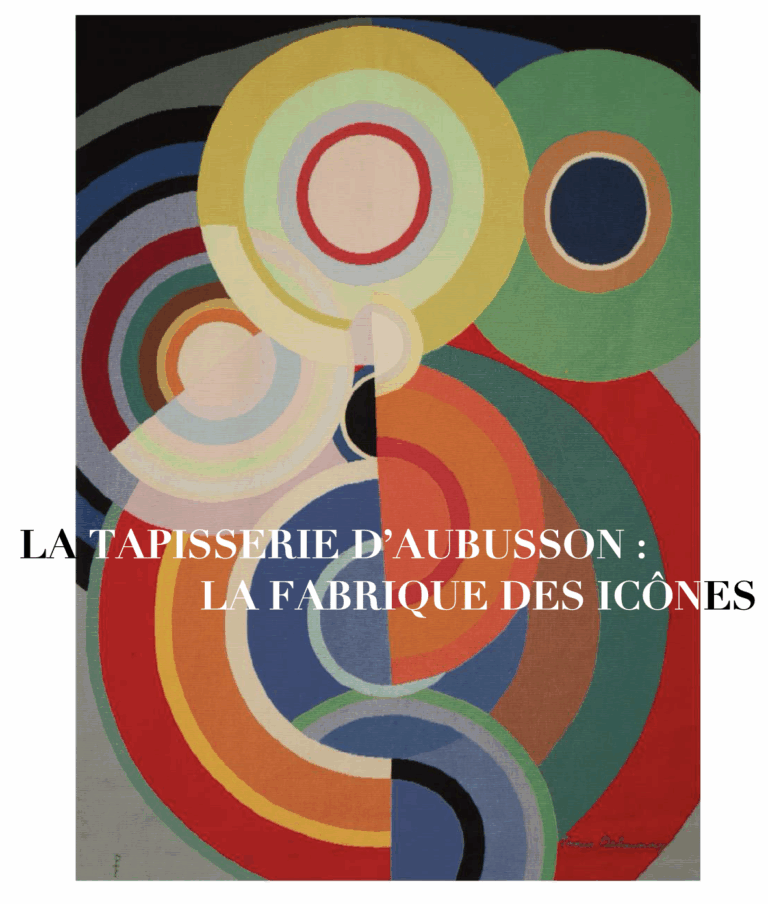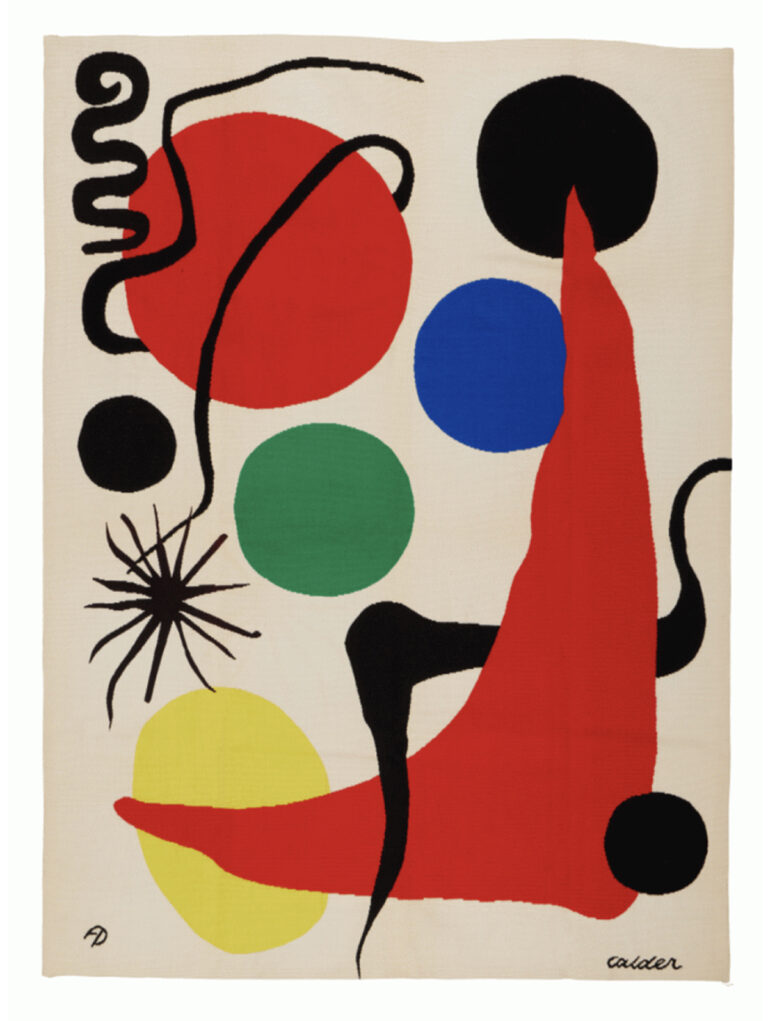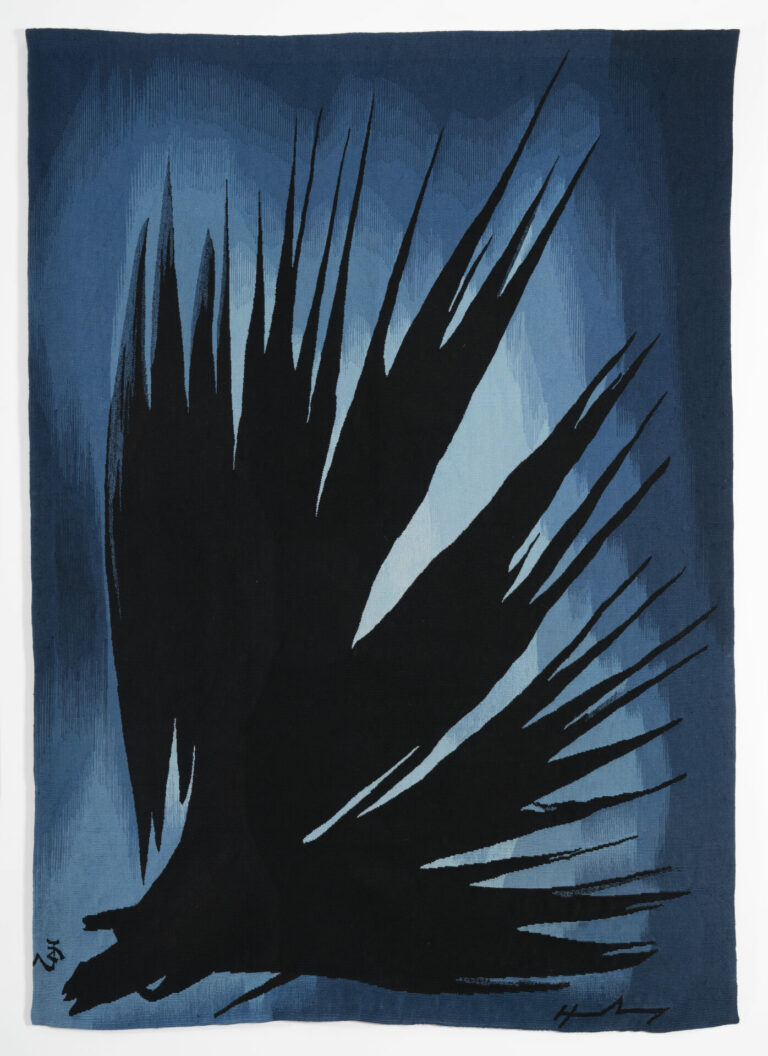AUBUSSON TAPESTRY: ICON FACTORY
AUBUSSON TAPESTRY: ICON FACTORY
Galerie Hadjer is pleased to present its first thematic exhibition, “Aubusson Tapestry: The Icon Factory,” which will be held from October 21 to November 29, 2025, during Art Basel Paris. Specializing in tapestries by the great masters of the 20th century, the gallery is organizing a celebration of the centuries-old craftsmanship of the French workshops of Aubusson, where the passage of time restores the image to its full symbolic and sacred power.
This exhibition aims to question the notion of the value of the image in a century dominated by the emergence of mass imagery and its technical reproducibility. Each tapestry, the result of patient, embodied craftsmanship and the bearer of a thousand-year-old tradition, gives the work a density, a materiality, and a presence in the long term, giving rise to enduring icons.
PRECIOUSNESS IN MULTIPLICITY
The 20th century introduced the repetition of images into the artistic vocabulary as a radical gesture. With his endlessly screen-printed Campbell’s soup cans, Andy Warhol made one of the founding acts of modern art. Everyday images are diverted and multiplied, thus questioning the means of their power. Through his mechanization of works of art, Warhol sought to strip the image of its uniqueness, which, having become disposable, was emptied of its aura. He asserted, “I think everybody should be a machine” (The Philosophy of Andy Warhol: From A to B and Back Again, 1975), seeking to erase the gesture of the human hand.
Contrary to this consumerist logic, the Aubusson workshops perpetuate an art form in which reproduction sublimates the original. Here, the repetition of the image—limited to six copies and two artist’s proofs—is a ritual that reinforces the icon rather than eroding it. When Warhol delegates to the machine, Aubusson entrusts to the hand. When industrial repetition seeks distance, weaving creates embodiment. The eight scattered copies of the same work become fragments of a shared memory: that of the Work in its entirety, but also that of all the places it has inhabited.
Roy Lichtenstein’s Still Life, which we are presenting, is quite revealing of the power of tapestry, as it combines the vocabulary of Pop Art with this medium, which gives the image a lasting presence. This emblematic piece invites us to reflect on the transformation of the Ben-Day dot into a thread weave, giving an unexpected texture to the icon of consumerism.
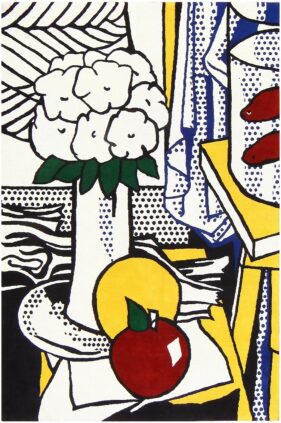
Roy Lichtenstein, Still Life, 1973
THE ANCESTRAL KNOW-HOW OF AUBUSSON
For this exhibition, we have selected eight iconic tapestries, all produced in the 20th century, a period when the workshops of Aubusson, including those of Raymond Picaud, Tabard, Pinton, and others, reconnected with the artistic avant-garde. Each piece illustrates in its own way the excellence of French workshops; from Fernand Léger’s figurative motifs to Alexander Calder’s vibrant compositions, M Corbusier’s textile architectures and Sonia Delaunay’s chromatic abstractions, they embody a deep love of gesture, thread and material, revealing the beauty of ancestral craftsmanship.
Listed as Intangible Cultural Heritage by UNESCO since 2009, the craftsmanship of Aubusson tapestry is the result of several centuries of refinement and transmission. Born in the heart of the Creuse region in Limousin, this tradition of excellence has developed in a rural area of central France, where slow gestures and mastery of materials have been combined since the 15th century.
Some of our pieces were made by the prestigious Pinton Frères factory, founded in 1867 in Felletin, a few kilometers from Aubusson. This family-run factory still embodies the vitality and continuity of the craft today.
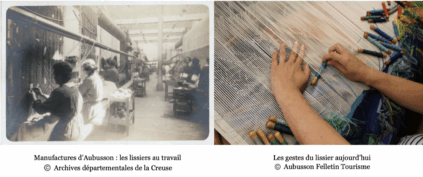
THE BEAUTY OF THE CRAFT
By its very nature, tapestry works in silence to restore time to its sacred character:
Often overlooked by the general public, the process of creating a tapestry is remarkably rich and complex. Beginning with the creation of a cartoon—a preparatory work designed by the artist—the tapestry then comes to life, thread by thread, thanks to the interpretation of highly skilled weavers. This slow work, carried out on a loom, can take several months or even years. Each tapestry thus becomes a unique object, the result of an intimate collaboration between an artistic vision and the patient hand of the artisan.
The making of fabrics has always had a sacred character. In religions and mythologies, spinning goddesses weave the fabric of each person’s existence. By reactivating this dialogue between textile art and the sacred, the Hadjer Gallery wishes to offer a space of resonance in which to rediscover the quiet power of woven images.
Finally, this imprint of the sacred is found in the “falling of the loom,” which refers to the moment when a tapestry, once woven, is detached from the loom. This gesture actually has a profound, almost ritualistic meaning. Throughout the creative process, the weaver works partially blind, guided by the cartoon, an inner vision, and a memory of the gesture. The falling off the loom then becomes a moment of revelation and the birth of the work.
This exhibition invites visitors to discover the silent power of woven images through rare works by Sonia Delaunay, Le Corbusier, Calder, and other great masters, where the material meets the sacredness of the icon.
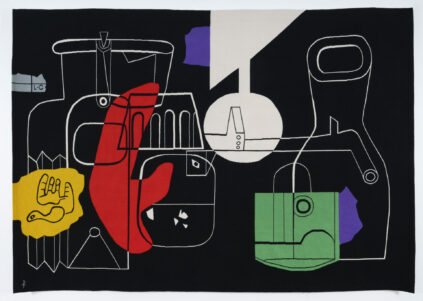
Le Corbusier, Nature morte, 1965
